

|
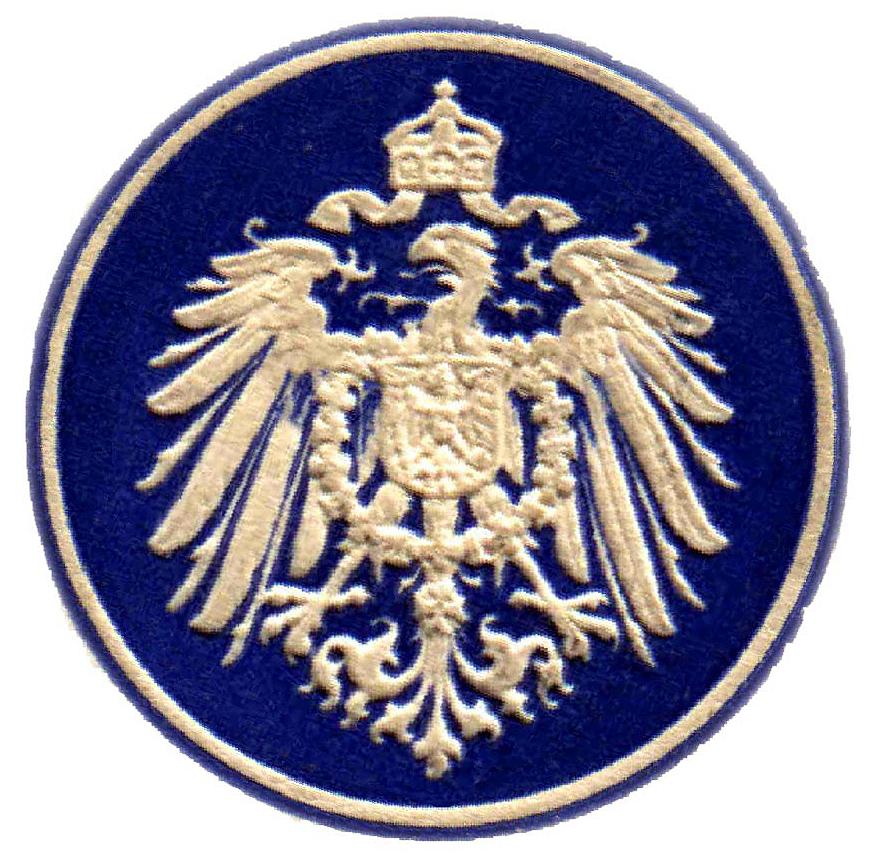
|
Postage Stamps used in the German Marshall Islands Hialeah Forgeries by Dirk H.R. Spennemann |
Introduction |
|
This section discusses a spate of forgeries that were sold at the on-line auction houses e-bay and Yahoo during 2000, 2001 and 2002. While it tries to be as comprehensive as possible, it cannot claim completeness. From late 1999 onwards genuine stamps and forged overprints imposed on genuine stamps were offered on the on-line auction-house e-bay by the Florida-based seller cclan. Since then large numbers of additional overprints covering wide aspects of philatelic collection fields have been offered by 'cclan' and later by sellers calling themselves 'adtinvest,' 'futete,' and 'unlimitedstamps'. All are/were based in Hialeah in Florida (USA). By late 2000 these sellers also offered stamps on Yahoo Auctions. Beginning in May 2000 a large number of forged G.R.I. overprints of German colonial stamps from Samoa, the Marshall Islands and German New Guinea were offered for sale on the on-line auction house e-bay. Since then material from these sources has resurfaced in on-line auctions offered by other sellers, thus dispersing the material and gradually obscuring the origin. In some such instances, false overprints were occasionally mixed in with otherwise genuine material. Conventional wisdom, disseminated by the sellers of these overprints, was that they had been produced by the Chicago stamp-dealer 'Rudolph Thomas' in 1912. Other forger names put forward by the auctioneers in the listings were 'Bohne,' and 'Wondelgem.' This is extremely unlikely, as most of the overprints were manufactured in the past two or three decades, if not (much) more recently. Forgers thrive on overprinted stamps, as it is comparatively easy and cheap to acquire unused German colonial stamps and to overprint them. At present there is no evidence that the people representing atdinvest are manufacturing the forgeries. What is clear, and not disputed by the sellers, that forgeries are being sold. The term "Hialeah forgery" used throughout this and related documents refers to the forgeries sold by the Hialeah group of sellers ('cclan,' 'futete,' atdinvest,' and 'unlimitedstamps') and does not imply that these were manufactured by the sellers. The images contained in this section were obtained over the World-wide Web. Offerings by the sellers were assessed, and the linked image file loaded separately. It was found that these image files were numbered sequentially (eg. 'Forger12,' 'Forger13,' etc). Once a new image file name was found, the number variations were systematically checked to inspect other image files of the same series. All image files relevant to the discussion are listed here. |
|
Hints for Identification
|
|
The Hialeah forgers (or the forgers of the material sold by the Hialeah sellers) have targeted a number of German colonial stamps in addition to the Marshall Island examples, namely those of German New Guinea, of the German Caroline Islands and of German Samoa. The stamps sold are genuine stamps of German Samoa supplied with forged overprints. On occasions, the forged overprints are on top of older, forged cancels (see figure 13). Overall, the forgeries are quite crude and on close inspection readily identifiable as such. The observations pertinent to the identification of Hialeah overprints can be summarised under the following points: |
|
Quality of Work In the original, the stamps were overprinted on a small platen press with the overprint set in formes. The overprints on these forged stamps have been applied by a rubber hand stamp rather than a steel device or a laser printer. The edges of the individual letters show feathering which is consistent only with application having been performed using a rubber or wooden device. The ink bleeds through to the verso (figures 1, 2, 4 & 5) and appears to be a formulation typical of more modern, water-based inks similar to those currently widely available and in use. |
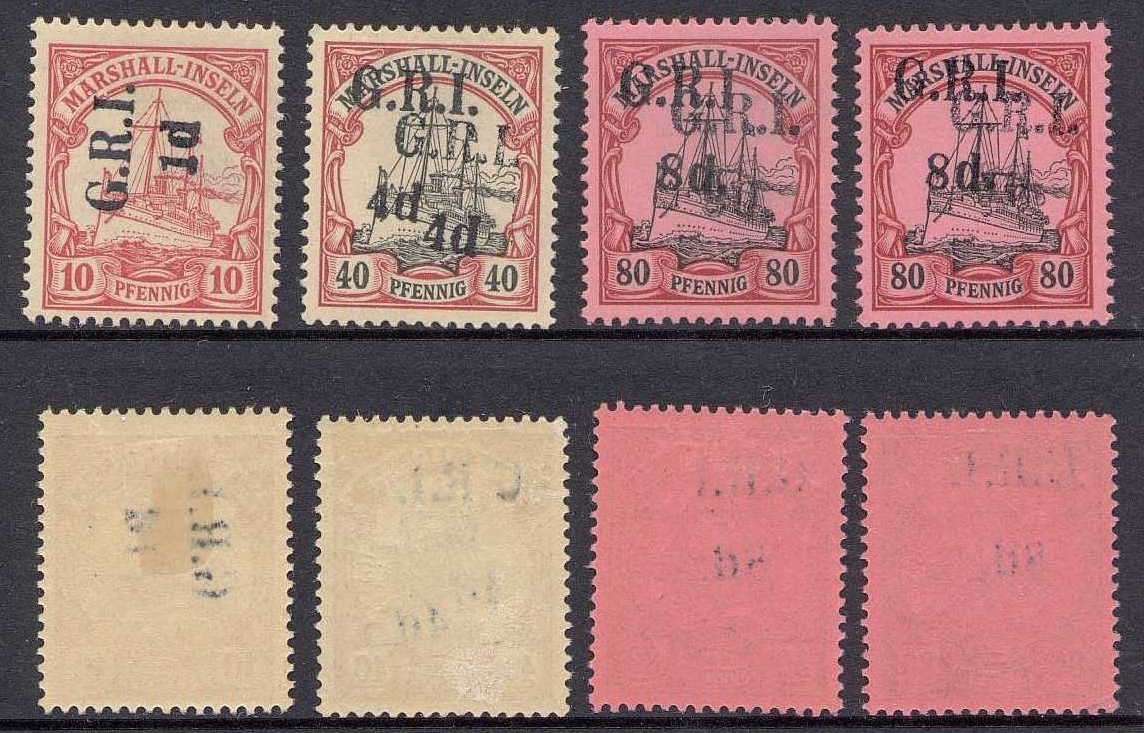 | |||
| a | b | c | d |
| Figure 1. Hialeah forgeries of German Marshall Islands overprints showing the front and the back of selected stamps. | |||
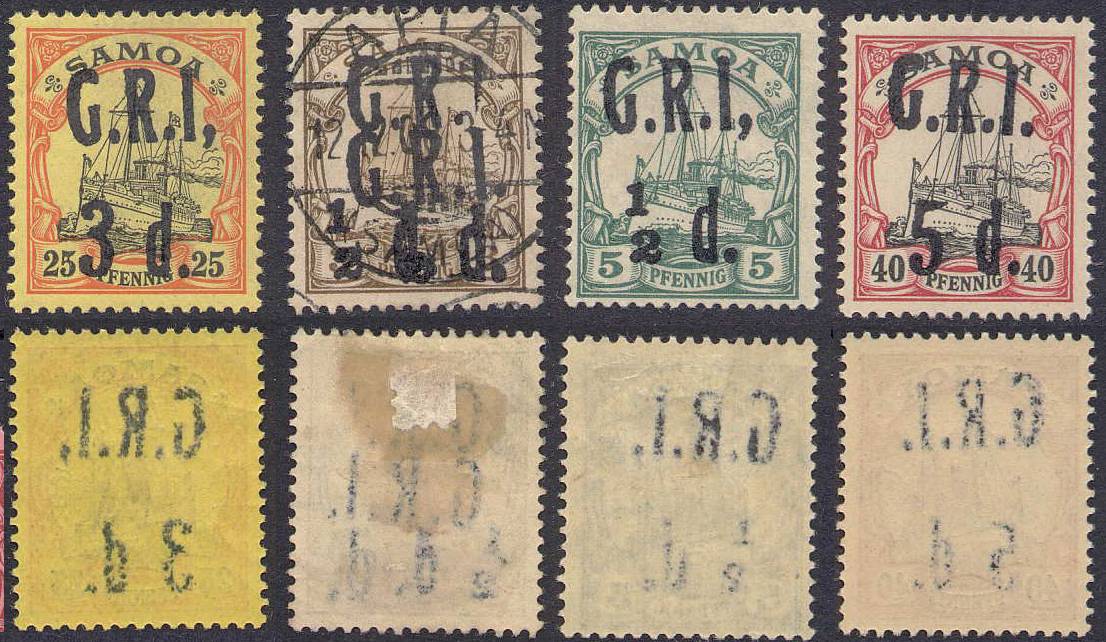 | |||
| a | b | c | d |
| Figure 2. Hialeah forgeries of German Samoa overprints showing the front and the back of selected stamps. | |||
|
On badly executed examples, the margins of the rubber handstamp are also visible in the value denomination, demonstrating the process of manufacture (figure 3a–d). Because hand-held rubber stamps were used, the overprint is fuzzy, and broad, as opposed to crisp and clear. The latter allows to identify even 'well executed' examples pasted on paper and 'cancelled' (see further below for examples). Double impressions often lack the ink on the second one (figure 3d).. |
 |
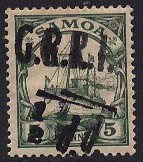 |
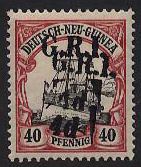 |
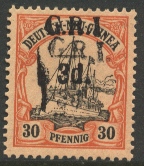 |
| a | b | c | d |
| Figure 3. Examples where the edges of the rubber stamp are also visible, demonstrating the method of manufacture. | |||
|
Alignment of overprints On the original genuine overprints the letters were set in formes, with both rows of characters set parallel. As the production of the Hialeah overprints was done manually, most certainly using separate rubber stamps for the 'G.R.I.' and the value, this parallel alignment is not maintained. Glaring examples are the 1 Mark red shown in figures 4 and 6. The same is true for several overprints on the smaller denomination stamps (see figure 7). |
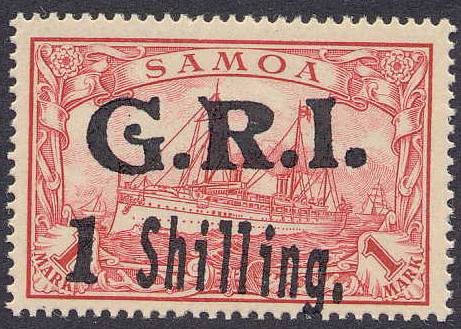
|
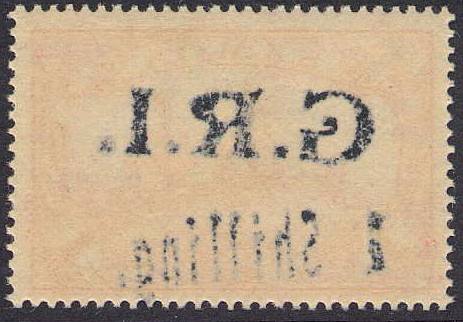
|
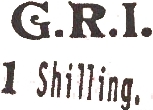
|
| a | b | c |
| Figure 4. GRI forgeries (a), back of stamp (b) and electronically extracted overprints (c).
| ||
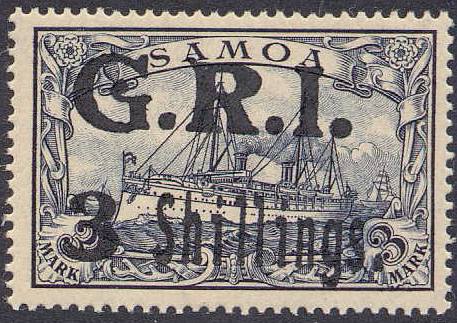
|
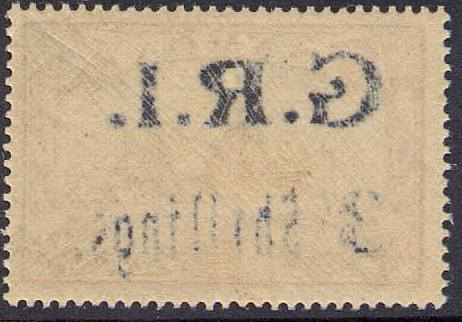
|
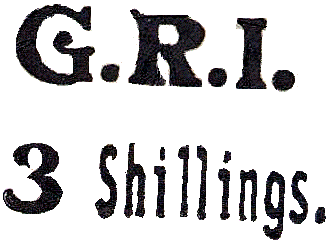
|
| a | b | c |
| Figure 5. GRI forgeries (a), back of stamp (b) and electronically extracted overprints (c).
| ||
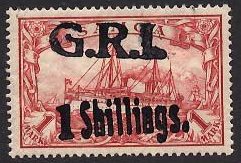
|
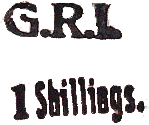
| |
| a | b | c |
| Figure 6. GRI forgeries (a), back of stamp (b) and electronically extracted overprints (c).
| ||
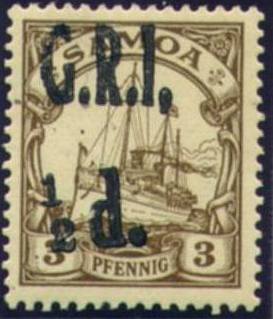 |
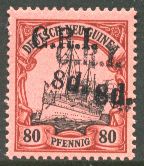 |
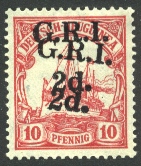 |
|
| a | b | c | d |
| Figure 7. Examples of bad alignment on smaller stamps. | |||
| That separate stamps for the top and bottom line of the overprint were used can be proven with the examples shown in figures 8 and 9. The examples presented in figure 8 demonstrate that the use of the two different stamps through the gross inconsistencies in the alignment. In figure 8a this is expressed both vertically and laterally, while in figure 8b this is blatantly obvious in the vertical alignment. |
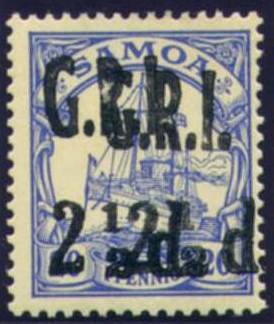 |
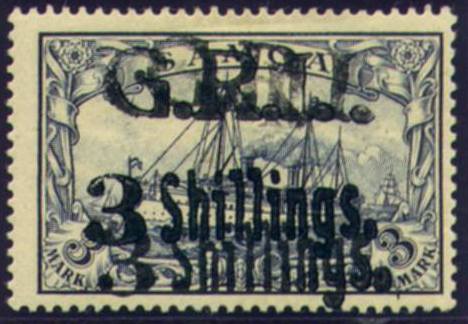 |
||
| a | b | ||
| Figure 8. Example of errors in the alignment of overprints of the first and the second line. | |||
| With a two-step production process it is obvious that mistakes would be made. The 5d on 50Pfg overprint (figure 9a) has two impressions of the G.R.I., but four impressions of the "5d." Likewise, a second example of the 5d on 50Pfg overprint has two impressions of the "G.R.I." and three impressions of the "5d." (figure 9b). The third example in that figure, the 3d on 30Pfg overprint has three impressions of the "G.R.I." and two impressions of the "3d." (figure 9c). |
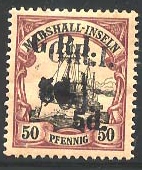 |
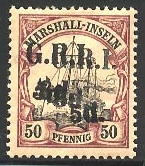 |
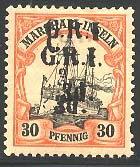 |
||
| a | b | c | ||
| Figure 9. Examples of errors in the frequency of overprints of the first and the second line. | ||||
|
The spacing of the letters "G.R.I." on some stamps suggests that either two different stamps were used, or that the letters were in fact moveable type and reassembled as needed (see figure 10 a and 10 b). The latter is also suggested by the 2 Marks overprint stamp shown in figure 11. Here the number "2" is at an odd angle compared to the word 'Shilling", a problem that frequently occurs with moveable rubber type. |
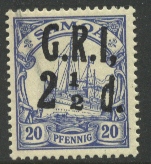 |
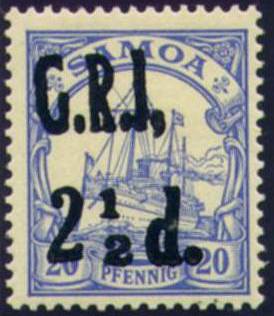 |
||
| a | b | ||
| Figure 10. Examples of variations in the width of the overprint (note the spacing of G.R.I.) | |||
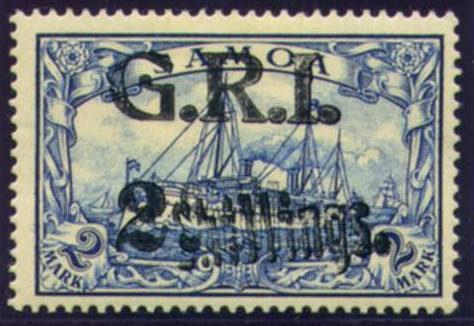 |
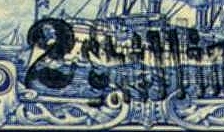 |
| a | b |
| Figure 11. Example of separate alignment of value figure on mark value stamp. | |
|
Watermarks Because none of the water-marked issues were actually sold in Samoa (the 5 Mark stamp had been delivered but did not reach issue), with the stamp stocks moved to the German consul in PagoPago, all stamps with watermarks are post-event falsifications and forgeries. |
|
Wholly fanciful creations The "6d. on 50Pf" stamp shown in figure 12a is a wholly fanciful creation, showing the value inverted while the "G.R.I." is not. This is only possible with separate value and "G.R.I." stamps. |
|
Implausible Dates While (among the Samoa lot) historic examples of Samoa overprints are known where Apia residents had cancelled stamps overprinted, resulting in dates slighly before the New Zealand occupation, some of the Hialeah material shows grossly implausible dates. The cancel shown in figure 12b, for example, shows the date 12.12.08 (12 December 1908). In the Marshall Islands situation this never occurred, as the stamps were never on sale on Nauru let, alone Japanese occupied Jaluit. Yet some forged "G.R.I." overprints occur on cancelled stamps. Examples for the Nauru cancel are shown in figures 13a and 13c, while an example of the Jaluit cancel can be found in figure 13b. What happened here was that stamps were used for the overprinting, which already carried older, forged cancels. |
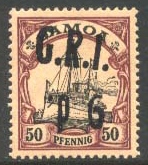 |
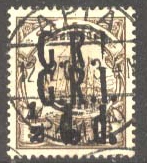 |
||
| a | b | ||
| Figure 12. Fanciful creations and wrong cancel dates | |||
| a | b | c |
| Figure 13. Forged overprints on top of (older) forged cancels. | ||
|
Forged Cancels A number of items carry forged cancels. Three date cancels have been identified. These are illustrated in figure 14. Common to all is that the date and time slugs are too close together, and that there is a hyphen between the year and the time slug. The known examples of cancels are depicted on this page. These forged cancels and post office seals were used to manufacture several items on piece (eg figure 15). On the odd example the forgers got carried away (figure 16). |
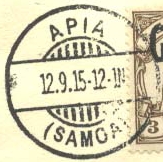 |
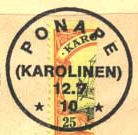 |
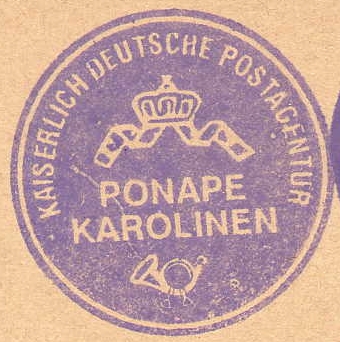 |
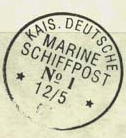 |
| a | b | c | d |
| Figure 14. Examples of Cancels and Seals used on Hialeah Material | |||
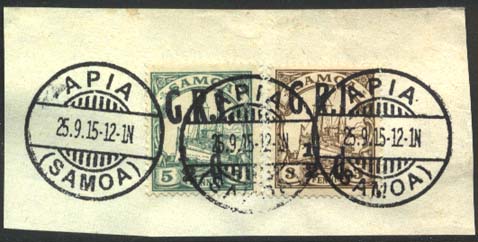 |
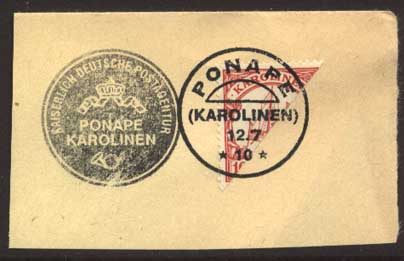 |
| a | b |
| Figure 15. Examples of forged pieces. | |
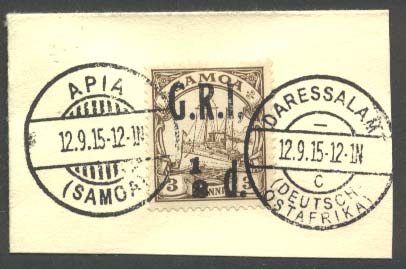 |
| Figure 16. An examples of a truly fanciful forged piece. |
|
Stationary In addition to the stamps, the same dealers also sold overprinted postcards. These are comparatively easy to identify because the forgers used for all copies the modern, cream and smooth card stock so characteristic of the reprints. All known examples of these cards seem to have been cancelled. |
|
Catalogue of known Hialeah Forgeries
|
| The known copies of forgeries of G.R.I. overprints on German Marshall Islands have been set out below, sorted according the base stamp used. More recently the same sellers commenced offering entire unperforated sheets of plain 'stamps' and of 'stamps' with GRI Overprints created using modern computerbased printing. (Warning: large images). The very small images in the catalogue stem from the images of multiple lots, were the stamps of the Marshall Islands only formed a small part, most frequently only one or two out of 30+ stamps. From the same source forged stamps and stationary from other German colonies also exists, such as: the Caroline Islands, the Mariana Islands, German New Guinea, Samoa, and the German Offices in China. The known copies of Hialeah forgeries have been set out below, sorted according the German base stamp used. Click on the stamp or the description below to be taken to the complete listing of known Hialeah Forgery copies of that base stamp. |
|
As soon as they appeared on e-bay the author had started collecting images of these fraudulent overprints for a web site on Marshall Islands stamps. Unfortunately, the images were renamed to reflect what was actually shown on them. Most of these images had been removed from servers at the time this project commenced (May 2001). Thus no file name references can be provided for some of the early downloads. |
 Click here for a detailed catalogue3 Pf |
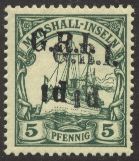 Click here for a detailed catalogue5 Pf |
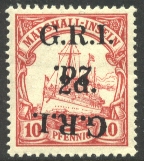 Click here for a detailed catalogue10 Pf |
Click here for a detailed catalogue20 Pf |
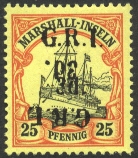 Click here for a detailed catalogue25 Pf |
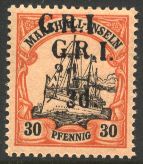 Click here for a detailed catalogue30 Pf |
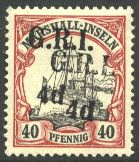 Click here for a detailed catalogue40 Pf |
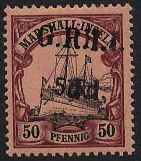 Click here for a detailed catalogue50 Pf |
 Click here for a detailed catalogue80 Pf |
|||
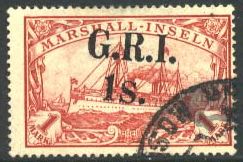 Click here for a detailed catalogue1 Mark |
 Click here for a detailed catalogue2 Mark |
||
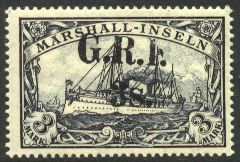 Click here for a detailed catalogue3 Mark |
Click here for a detailed catalogue5 Mark |
||
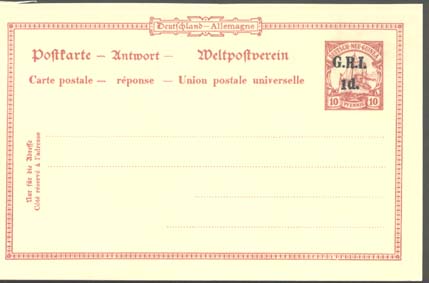 Click here for a detailed cataloguePostal Stationary |
[Contents] [Forgeries]Bibliographic citation for this documentSpennemann, Dirk H.R. (2002). Postage Stamps used in the German Marshall Islands. Hialeah ForgeriesURL: http:/marshall.csu.edu.au/Marshalls/html/Stamps/Hialeah/Hialeah.html CONTACT: Dirk H.R. Spennemann, Institute of Land, Water and Society, Charles Sturt University, P.O.Box 789, Albury NSW 2640, Australia. e-mail: dspennemann@csu.edu.au |
| select from the following... | ||||||
|
|
||||||
|
Digital Micronesia-An
Electronic
Library & Archive
is provided free of charge
as an advertising-free
information service
for the world community. It is being maintained by Dirk
HR Spennemann, Associate
Professor in Cultural
Heritage Management,Institute of Land, Water and Society and
School
of Environmental & Information Sciences, Charles
Sturt University,
Albury, Australia. The server
space and technical support are provided by Charles
Sturt University as part of its commitment
to regional engagement. Environmental
SciencesInformation
Sciences
|
||||||